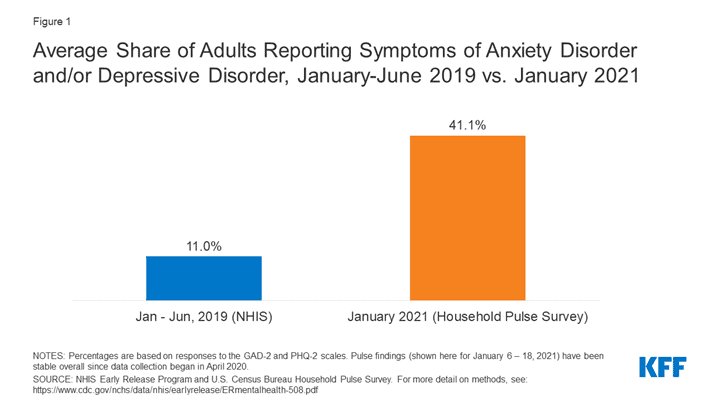Startups have always been environments of intense pressure. This became even more true during the pandemic. Dealing with the resulting stress and burnout is (or should be) a high priority for leadership in rapidly scaling companies.
To get a perspective on stress, burnout, and other mental health issues, I held a virtual fireside chat with Melissa Doman, M.A. – a widely recognized mental health at work speaker, consultant, and Organizational Psychologist, for CEOs and other senior leaders from our portfolio companies.
Melissa is a former clinical therapist and the author of “Yes, You Can Talk About Mental Health at Work: Here’s Why … and How to Do It Really Well.” Here are excerpts of Melissa’s responses to the topics we discussed.

How to think about “mental health” and “mental illness”
Mental health is our baseline social, emotional, and cognitive functioning. It is something that everyone on the planet has. Mental illness is a clinically diagnosable condition that impacts your emotional, social, and cognitive functioning – sometimes daily, sometimes occasionally.
There are over 300 types of mental illnesses, including depression, anxiety, PTSD, anorexia, etc. Prior to the pandemic, one in four persons in the world would experience a mental health condition sometime in their lifetime. Since the pandemic, that number is increasing.

People often forget that the brain is an organ. Like any other organ in the body, there is a health state, a stress state, and an illness state. But because the brain governs who we are –how we think, how we work, and how we interact with others –when that organ acts in a way that others do not understand, historically it’s been made a bogeyman. And that’s something I’m trying to change.
Mental health must be discussed in the workplace
Let’s be very clear: talking about – and managing – one’s mental health is an essential adult practice. It is just as important as breathing, eating, and sleeping.
Oftentimes, people don’t even want to say the words “mental illness,” because it feels too scary. But talking about mental illness should be no different than, say, talking about diabetes, cancer, or any other condition that requires awareness, education, and treatment.
Talking about – and managing – one’s mental health is an essential adult practice. It is just as important as breathing, eating, and sleeping.
We tend to separate work and personal life, and mental health is seen as a “personal” issue. But you can’t separate your brain from work. We need our brains to do our work. So, when there’s an issue with the health of the brain, there can be a direct impact on a person’s ability to do their work.
Any workplace that isn’t at least attempting to talk about mental health is failing its workers. High-value employees will increasingly recognize this cultural deficiency and look for a better work environment.
One of the comments I hear most often is that people fear raising a mental health issue because they will be seen as “weak” or incapable of doing their work. Why is there fear of being ostracized or judged for talking about something that we all share?
We need our brains to do our work. So, when there’s an issue with the health of the brain, that can have a direct impact on a person’s ability to do their work.
If someone is sufficiently self-aware that they recognize they have mental health issues, and if they are trying to manage those issues, isn’t that a sign of emotional intelligence and responsibility that we should reward, not punish? People who are brave enough to talk about an issue demonstrate insight, strength, and personal responsibility – qualities that any company looks for in a team member. And talking about it will encourage people to take action to manage their mental health.
Recognizing signs of potential mental health issues
Mental health issues are not as easy to recognize because they’re often invisible, and people can be extremely proficient at hiding their emotional state from others.
The key is to pay attention to people’s baselines. And when you see variations from the baseline, there’s probably a reason. There are many potential indicators of a change from baseline: how a person looks, their body language, the words they choose, how much (or little) they talk, and their vocal tone. We shouldn’t assume we know the reasons for these changes, but if there are variations from baseline, there probably is a cause. That cause may be episodic or chronic, but it requires attention.
If you ask, “How are you?” people will seldom give you an honest answer if something is wrong. We need a work environment and a culture that signals it’s OK to respond, “You know, I’ve been having a really rough time lately.”
Similarly, it’s OK to ask (gently) for an answer if you sense something really isn’t right. (Remember those signals of variations from baseline.) Try to normalize conversations about mental health, just as people might have a conversation if someone is experiencing another type of medical issue. But you also have to respect that if someone doesn’t want to talk about their mental health, it’s their right not to share that information. Remember, asking someone how they’re doing is about helping them, not your need to help someone.
Creating room for conversation
In scaling businesses, talking about mental health is typically not a high priority, even though it should be. But introducing the topic is a gradual process. You have to start by explaining why you’re raising the topic. Give clear, authentic reasons: mental health is an issue of concern for everyone and for the business; raising the issue is not a weakness, it’s a strength.
If an activity or attitude is important to the company, it must be modeled from the top. All management must exhibit awareness and care about mental health. And of course, no member of senior management – the CEO included – is immune to having mental health issues of their own. They must be willing to acknowledge their own issues. It’s like the airplane safety instructions: put on your own oxygen mask before you help others.
The more that mental health is discussed – in an open, caring, nonjudgmental way – the more likely a person will self-identify and raise a flag. That’s the behavior we want to encourage.
The more that mental health is discussed – in an open, caring, nonjudgmental way – the more likely a person will self-identify and raise a flag. That’s behavior we want to encourage.
It’s vital that companies encourage self-awareness about mental health and point to available resources. And to remember that good leadership can, and should, come from any level in an organization.
Talking about tragic events at work
A broad range of feelings can arise following tragic events, and they are completely reasonable to feel. When confronted with heartbreaking news stories, one can be overwhelmed by anger, fear, helplessness, resentment, sadness, confusion, trauma, rage, and anxiety that you or a loved one “could be next”. And when these feelings come up, the best thing we can do is allow ourselves to experience them as they come up instead of pushing them away. We have those feelings for a reason – to help us respond to stimuli in our environment and to signal to ourselves (or others) if we need help.
Managers must recognize that employees may be experiencing these feelings in the workplace. The goal should be to create psychologically safe workplaces where people can have open conversations about the issues that are on everyone’s minds. In psychologically safe workplaces, colleagues and managers talk openly about mental health, emotions (even negative ones) are normalized, and people openly take time out of their days for things like therapy appointments.
Managers in a psychologically safe workplace need to lead the way in showing people support. Whether it’s a companywide town hall, a team meeting, or a 1:1, management needs to encourage others to be open about how these events are impacting them and to vocalize what they need from others in terms of conversational support. Remember, regardless of who we are or where we come from, people look to leaders for permission and guidance about the rules of engagement in a team, whether it’s consciously or not.
Is burnout a mental health issue?
It absolutely is. Levels of burnout are skyrocketing, mainly due to the added pressures brought on by the pandemic. Burnout is real. It’s the body and brain saying, “I gave you all the warning signs and you didn’t listen. Now, we’re shutting down for business and you don’t have a choice.”
The signs of burnout can include:
- being overwhelmed by the simplest tasks
- an inability to prioritize
- crying spells
- anger and irritability
- communicating much more or less than usual
- “not playing nicely with others”
But some people show no signs. They can be very good at hiding it, so you’d never know. That’s why it’s so important to normalize conversations so that they can occur proactively, not just in response to problems.
Burnout is a legitimate cause for seeking help. That can mean talking to colleagues or a manager. It can mean seeing a therapist; that’s what they’re there for. It can mean a medical leave of absence for short-term disability.
And managers need to be trained on what to do when a person returns to the workplace after a leave. The first rule is to never assume that you know what the person needs. Ask! Engage in conversation. For example: “We’re happy to have you back, and hope it was a restorative time. I want to be sure you get the support you feel you need, so can you tell me how I can be most helpful in this process.”
You may want to ask whether the person wants to share their story with colleagues. Again, don’t assume the answer either way. It’s up to that person.
Talk about mental illness like you do any other illness
We all would agree that if someone has cancer or some other form of a chronic illness, their company and coworkers should exhibit concern, compassion, and a commitment to help. It’s no different with mental illness. From the CEO down, it’s vital that organizations make clear that talking about mental health, managing one’s own mental health, and seeking help when needed is behavior that’s appropriate and encouraged.
Achieving that environment in a scaling company is not easy. But any organization that professes “our people are our most valuable asset” cannot fail to make mental health a priority.



